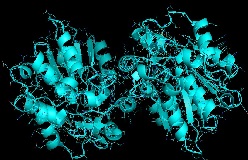
Enzymes
Enzyme Action
Enzymes are globular proteins that work as biological catalysts. A catalyst is a substance that increases the rate of the chemical reaction while remaining unchanged at the end. They lower the activation energy i.e. the energy required to start a reaction. Enzymes have a 3D shape with specific active sites onto which the substrate molecule binds.
The lock and key mechanism were put forward to explain the binding between the enzyme and the substrate molecule. The lock refers to the active site of the enzyme, whereas the key refers to the substrate. The active site of an enzyme molecule is complementary to the shape of the substrate molecule, thus allowing them to fit together. Both fit into each other to form a Substrate-Enzyme complex. If the shape of the substrate molecule is not specific to that of the enzyme, then they won't fit into each other, and the reaction will not occur.
Factors affecting enzyme activity:
I. Effect of temperature
All enzymes have an optimum temperature that they work best on. As the temperature increases, the kinetic energy of the molecules increases which causes the enzyme and substrate molecules to collide more often. For every 10 °C increase, the rate of reaction doubles up until the optimum temperature has been reached. When the optimum temperature has been reached, a further increase in temperature will change the 3D shape of the enzyme, and the enzyme will lose its active site. This causes denaturation of the enzyme.
Experiment:
Controlled Variables:
• pH
• Same volume and concentration of starch and amylase solutions.
Procedure:
1. Set up four water baths at different temperatures (0°C, 20°C, 40°C, and 60°C).
2. Add amylase solution to four test tubes, and add the starch solution to another set of four test tubes.
3. Using a dropping pipette, add a drop of iodine into each test tube which has the starch solution.
4. Gently place one starch and one amylase solution test tube into each water bath. Leave it for 5 minutes so the amylase and starch reach the temperature required.
5. After 5 minutes, measure the temperature of each water bath, then pour the amylase solution from the first tube to the first test tube of starch solution. Then, put this tube back in the water bath. Repeat this step with the other test tubes.
6. The blue color of the iodine will disappear as the amylase will break down starch to maltose. Note down how long it takes for the disappearance of the color for each case.
Results:
At the optimum temperature (37°C for Amylase), Starch will be broken down quickly, thus the time taken for the colour to disappear will be less. At lower temperatures like 20°C, the time taken will be more, while no breakdown will take place at high temperatures like 60°C as the enzyme is denatured.
II. Effect of pH
Each enzyme has a specific pH that is best suited to it. The pH scale determines how acidic or alkaline a substance is. On altering the pH, the shape of the enzyme gets distorted. When the shape gets distorted, it will not be able to bind to the substrate molecule, and chemical reaction won't take place.
Experiment:
Controlled Variables:
• Temperature
• Same volume and concentration of starch and amylase solutions.
Procedure:
a. Set up five test tubes. Add 5 cm3 of starch solution into each of the tubes.
b. Add 1 cm3 sodium carbonate solution (pH 9) into test tube 1. Add 0.5 cm3 sodium carbonate solution (pH 8) into test tube 2. To keep the third test tube neutral, do not add a solution to it. Add 2 cm3 ethanoic acid (pH 6) into the third test tube and 4 cm3 ethanoic acid (pH 3) in the fifth one.
c. Add iodine drops on a white tile/cavity.
d. Place 1 cm3 of amylase solution through a syringe into each tube.
e. Shake the tubes and note down the time
f. Use a dropper to add one drop from each sample in the tube to the iodine drops placed on the white tile. If a sample doesn’t give blue color, then this means that amylase has broken down the starch. Note the time taken.
g. Using a dropper, add a drop from each tube onto a pH paper
Results:
The breakdown of starch happens instantly if the enzyme is working effectively. The optimum pH of Amylase is 7. Therefore, at pH 7, the time taken for iodine to no longer change colour will be the least
